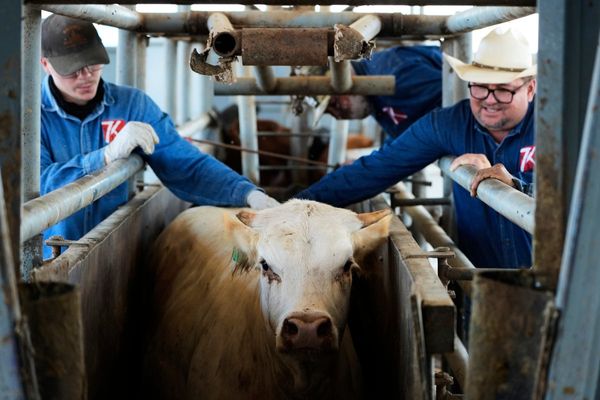
In a city as culturally vibrant as Amsterdam, both high art and fine dining are available in abundance. Never, though, have the two elements converged fully into one. Until now. Bluespoon Restaurant and Bar, inside the lobby of the Andaz Amsterdam hotel is offering guests the opportunity to ‘have a bite of art‘, with it’s new multi-course, multi-media inspired menu.
In crafting the innovative dining experience, chef Sander Bierenbroodspot leverages the property’s immense collection of imaginative work, specifically its many video-art installations. Combing through the exhibits, he landed on five particular pieces to inspire four separate dishes. With each pairing, the moods and sentiments beaming from the screen are echoed in the flavors and tastes assembled on the plate.
The first course is preceded by a short yet heart-wrenching film, titled My Voice Would Reach You, by Meiro Koizumi. It follows a man along the chaotic streets of Tokyo, as he pauses to phone his mother, begging her to accompany him on vacation. As the story progresses, it’s revealed that the woman on the other line is not his mother, but a bewildered customer service clerk. The piece is meant to highlight the isolation one can feel even in a bustling city, reaching a point at which one feels so alone they reach out to anyone they can find for a human connection. In the kitchen, Bierenbroodspot re-creates these emotions through a mackerel, garnished with avocado, quinoa, and apple. The mackerel, an ubiquitous form of seafood in Japanese cuisine, is meant to highlight the aspects of everyday life in the country. But it sits in stark contrast to its accompanying elements, struggling to connect with the abundance of flavor that surrounds it.
The second course begins with a compilation of two videos: Rijpma’s Tape Generations, along with Forecast by Anne de Vries. The first video focuses on multiple rolls of scotch tape, arranged in a complex, aesthetically pleasing pattern and hung from the ceiling. The artist then films the rolls unraveling, moving almost organically as they peel from the ceiling, colliding and embracing each other. The footage is then turned upside down, creating a visual effect in which the rolls seem to be floating upwards, ascending into the sky.
Forecast is a dizzying compilation of thousands of printed squares depicting a sky full of clouds, each square floating in space as a camera revolves throughout the collection. The meal effortlessly re-envisions the aesthetic of each piece. Several large grilled scallops immersed in frothy clouds of sherry foam evoke the ethereal aspects of the art in a way that is both visually pleasing and — more importantly — deliciously balanced.

The main course takes a darker turn, drawing its inspiration from a clip called Mastering Bambi, created by artists Persijn Broersen and Margit Lukács. The pair dissected the 1942 Disney classic, editing out all animal characters to leave a hollow, haunting backdrop devoid of the warmth and coziness that the film evokes. The piece is a statement on the damage that humans have done to the ecosystem, as environmental degradation leads us to a world that is increasingly hostile to our animal counterparts. The meal is crafted with a focus on vegetation, with white asparagus and artichoke meticulously arranged to evoke a miniature forest. Only after accepting the absence of animal life, does a slice of venison arrive, unexpectedly, at the table — a decidedly succulent representation of the titular character.

For dessert, Cristina Lucas’ Abstraction Licking, is an amusing take on Piet Mondrian’s colorful quadrilateral-based artwork, in which silhouetted women dance and twirl suggestively amongst the rectangles as if performing for an audience. The dessert is a spirited recreation of Mondrian’s work, featuring distinct colorful squares that are packed with fruit flavor, while the vibrant tastes match the spirit and enthusiasm of Lucas’ piece.
Art and cuisine are often cut from the same cloth. Never more so than in their shared ability to nourish and comfort. Sometimes the connections are less obvious; some of the themes expressed in the Andaz’s collection are at times unsettling. Not exactly the sort of emotion you want your food to evoke. But the very concept of pairing video art with cuisine is a bold task to take on. Even when he fails to make a compelling case for a particular pairing, Bierenbroodspot’s commitment to presentation and flavor never waver. And for this, it is truly a sight — and taste — to behold.







